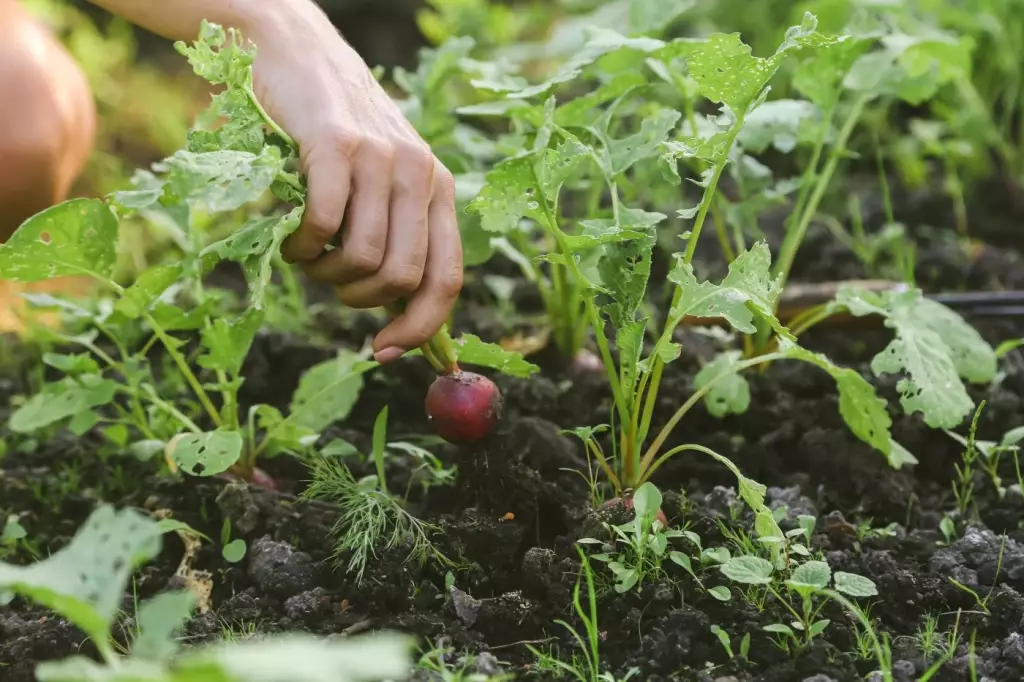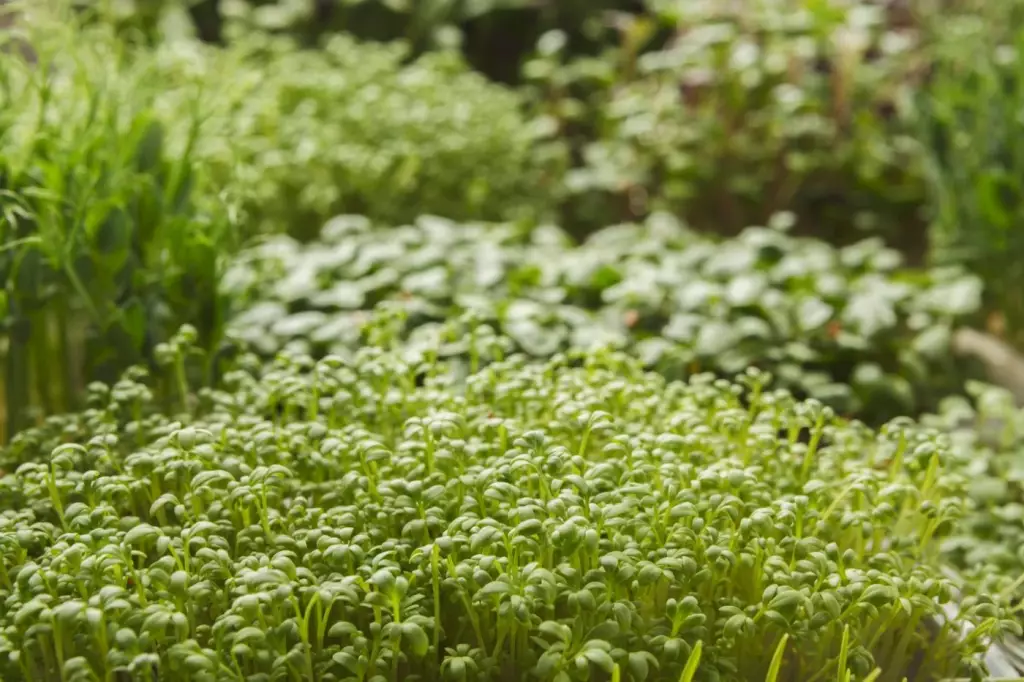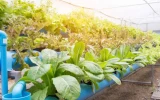The 13 Most Profitable Aquaponics Crops (2023 Calculation)
There's a vast difference in profit margin between the most and least profitable aquaponics crops. But calculating the exact margins for each crop is tedious, so I've crunched the exact numbers for you. These 13 plants are not only great for generating returns on investment but also cater to the increasing demands of consumers.
The most profitable crops for aquaponics are basil, lettuce, tomatoes, chives, arugula, radish, parsley, Chinese cabbage, watercress, lemongrass, thyme, kale, and cilantro. These crops have fast growth rates, high nutritional value, high demand, a high price point, high yields, adaptability, and low maintenance, which makes them profitable.
When choosing your aquaponic crops, it's crucial to factor in water requirements, your local market conditions, and the growing environment. Let's maximize your profit by picking the most valuable crops that are most in demand on the market today.
Summary
- With the increasing demand for sustainably grown produce, aquaponics provides a unique opportunity to grow plants and fish together in a symbiotic environment.
- The 13 crops stated here are able to thrive in aquaponics systems with minimal requirements, as they tend to grow quickly and are able to subsist on the nutrients provided by fish waste alone.
- The cost of inputs like fish feed, energy, and labor will inevitably affect the overall profitability of your aquaponic system.

On this page:
Top 13 Profitable Crops for Aquaponics
The profitability of a crop in aquaponics depends on several factors, including its growth rate, yield, market demand, and market price. In this section, we will discuss some of the most profitable aquaponics crops for 2023. These high-value crops can be categorized into three main groups: leafy greens, herbs, and microgreens.
The amounts of some production costs in the table below are estimates based on the typical profit margin of microgreens, which ranges from 50 to 80%, according to BlueCart, Inc.
| Top Aquaponics Crops | Market Price | Production Cost | Profit per Crop (market price less production cost) |
|---|---|---|---|
| 1. Basil | $1.77 per bunch | $0.17 per bunch | $1.60 per bunch |
| 2. Lettuce | $2.56 per pound | $0.33 per pound | $2.23 per pound |
| 3. Tomatoes | $3.69 per pound | $0.83 per pound | $2.86 per pound |
| 4. Chives | $2.53 per pound | $0.32 per pound | $2.21 per pound |
| 5. Arugula | $2.80 per bunch | $1.40 per bunch | $1.40 per bunch |
| 6. Radish | $2.04 per bunch | $1.02 per bunch | $2.08 per bunch |
| 7. Parsley | $1.94 per bunch | $0.86 per bunch | $1.08 per bunch |
| 8. Chinese cabbage | $1.28 per pound | $0.64 per pound | $0.64 per pound |
| 9. Watercress | $1.94 per bunch | $0.87 per bunch | $1.07 per bunch |
| 10. Lemongrass | $5.86 per pound | $2.84 per pound | $3.02 per pound |
| 11. Thyme | $1.56 per bunch | $0.68 per bunch | $0.88 per bunch |
| 12. Kale | $1.88 per bunch | $0.90 per bunch | $0.98 per bunch |
| 13. Cilantro | $1.88 per bunch | $0.94 per bunch | $0.94 per bunch |
The crops mentioned here are considered to be the most profitable for aquaponics for the reasons stated below:
-
Basil: Basil is a fast-growing herb that is in high demand in the culinary industry for its aroma and flavor. It can be harvested multiple times and sold fresh or dried.
-
Lettuce: Lettuce is a leafy green vegetable that can be harvested within weeks and sold as baby greens or full heads. It is a staple ingredient in salads and sandwiches and has high market demand.
-
Tomatoes: Tomatoes are a popular fruit that can be grown in aquaponics year-round. They have a high market demand and can be sold fresh or processed into sauces, salsas, and other products.
-
Chives: Chives are a versatile herb that can be used fresh or dried in various dishes. They have a mild onion flavor and can be harvested multiple times.
-
Arugula: Arugula is a peppery leafy green that is in high demand in the gourmet market. It can be harvested within weeks and sold as baby greens or full leaves.
-
Radish: Radish is a root vegetable that can be grown quickly and harvested within weeks. It has a mild flavor and can be sold fresh or pickled.
-
Parsley: Parsley is a common herb that can be used fresh or dried in various dishes. It has a mild flavor and can be harvested multiple times.
-
Chinese cabbage: Chinese cabbage is a leafy green vegetable that is in high demand in the Asian market. It can be harvested within weeks and sold fresh or pickled.
-
Watercress: Watercress is a leafy green vegetable that is in high demand in the gourmet market. It has a peppery flavor and can be sold fresh or processed into salads, soups, and other products.
-
Lemongrass: Lemongrass is an herb that is in high demand in the culinary and medicinal markets. It has a citrusy flavor and can be used fresh or dried.
-
Thyme: Thyme is an herb that can be used fresh or dried in various dishes. It has a strong flavor and can be harvested multiple times.
-
Kale: Kale is a leafy green vegetable that is in high demand in the health food market due to its high nutrient content. It can be harvested multiple times and sold fresh or processed into chips, juices, and other products. Kale is also a hardy plant that can tolerate a range of growing conditions and pests.
-
Cilantro: Cilantro is an herb that is in high demand in the culinary market for its unique flavor and aroma. Cilantro is also a fast-growing plant that can be harvested within weeks and sold fresh or processed into sauces, dips, and other products. Additionally, cilantro is a good companion plant for other crops as it repels some pests and attracts beneficial insects.
High Value Crops that are Profitable

Leafy greens are a popular choice for aquaponics systems due to their fast growth rates and high nutritional value. These crops are easy to grow and have relatively low maintenance requirements, making them ideal for both beginners and experienced growers.
Herbs can be a significant source of income for aquaponics farmers due to their high demand and price per pound. By growing a diverse selection of herbs, you'll be able to cater to various customer preferences and maximize your profits.
Microgreens are young, tender plants harvested just after the first leaves develop. They offer a higher concentration of nutrients than their mature counterparts and have become popular with health enthusiasts and high-end restaurants.
Microgreens have a short growing cycle, typically between 7 and 21 days, allowing you to harvest and sell them quickly. Their high demand and price point make them ideal candidates for a profitable aquaponics business.
High Yielding Crops that Give More Profit
Tomatoes are a popular choice for aquaponics systems due to their nutritional value and versatile use in various recipes. Cherry tomatoes, in particular, are known for their high yields and profitability. Cherry tomatoes are among the most profitable aquaponics crops.

When choosing tomato varieties, you should consider factors such as fruit size, growth habit, and resistance to diseases. Ensure you provide proper lighting, temperature, and nutrient levels to achieve optimal growth and high yields.
Low Maintenance Crops to Grow for Profit
When it comes to aquaponics, low-maintenance crops require minimal care and are essential for a productive and efficient system.

Root vegetables such as carrots, radishes, and beets are great choices for aquaponics systems due to their adaptability and simple nutritional requirements. They can grow well in media beds or wicking beds, which provide enough support for their developing roots. Make sure to give them enough space to grow and maintain the right water and nutrient levels, and you'll have a bountiful harvest of nutritious and profitable root vegetables.
Tips for Boosting Profitability in Your Aquaponics Business

Here are some tips to help you boost profitability in your aquaponics journey.
-
Choose the right crops: Opt for crops that grow quickly, have high demand, and can thrive in an aquaponic environment. Some examples include lettuce, kale, spinach, and cherry tomatoes.
-
Efficient system design: Design your aquaponics system to make the best use of space and resources. Use vertical farming techniques, proper filtration, and energy-efficient pumps to optimize your system.
-
Master the art of crop rotation: Rotate your crops to ensure continuous production and maintain the nutrient balance in your system. This also helps prevent the buildup of pests and diseases.
-
Monitor water quality: Maintaining optimal water quality is crucial for the health of both your plants and fish. Test pH, ammonia, nitrite, and nitrate levels regularly to ensure a balanced ecosystem.
-
Market your produce: To maximize your profits, focus on marketing your produce to the right customers. Sell at local farmers' markets, offer a Community Supported Agriculture (CSA) program, or partner with restaurants and grocery stores that prioritize locally sourced and organic produce.

